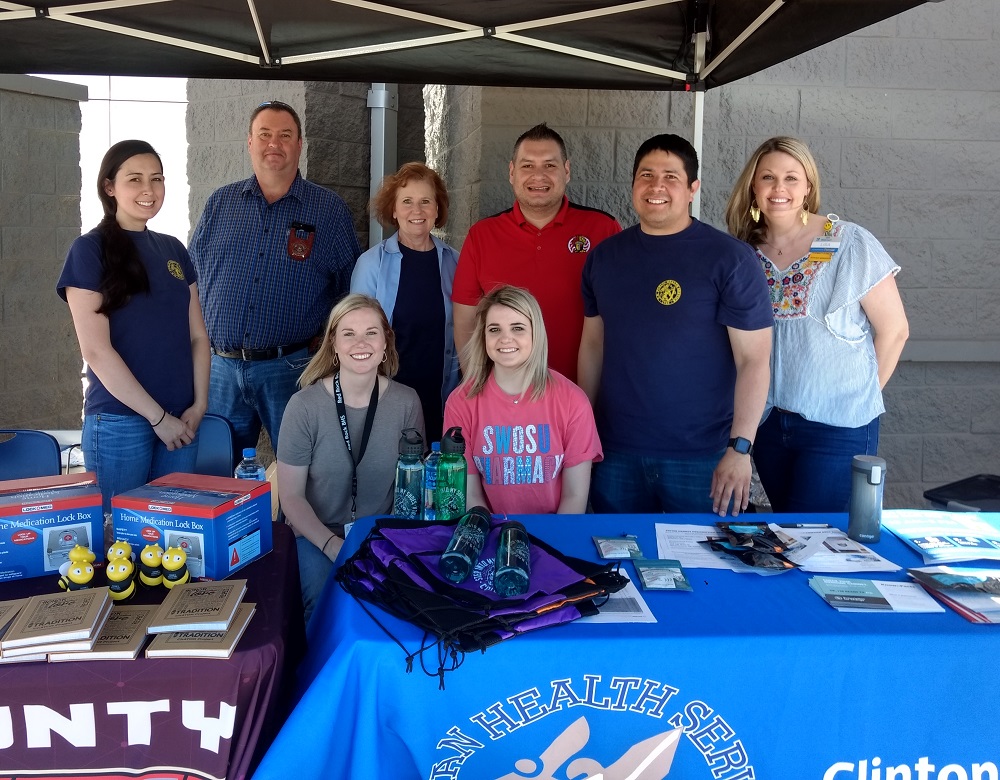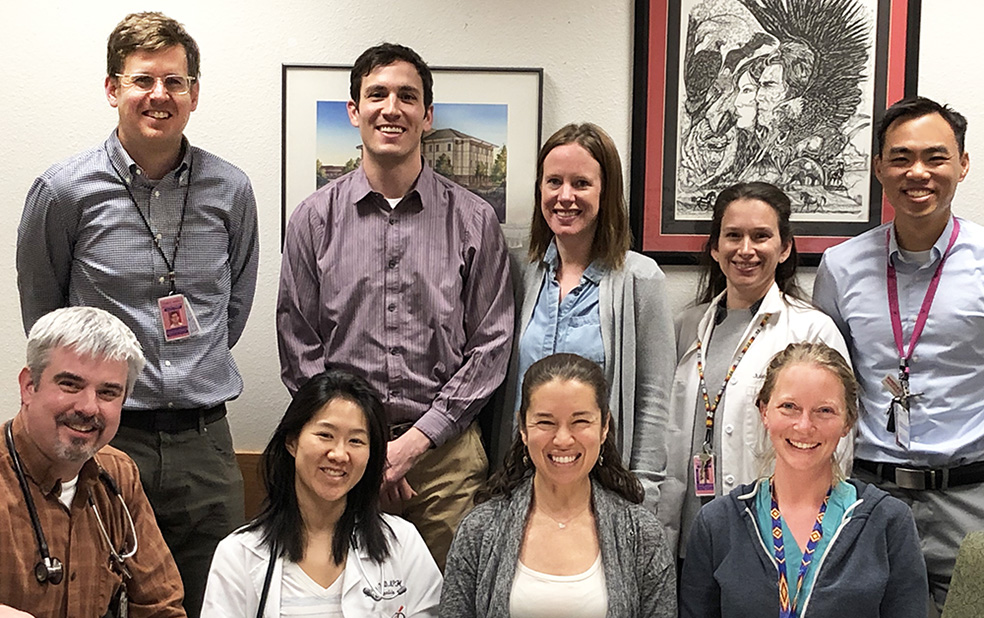Best and Promising Practices in Pain Management and Opioid Use Disorder
Clinton Service Unit
The Clinton Service Unit (CSU) has placed importance on medication safety, opioid overdose awareness, and collaborations to advance the IHS mission. For several years, CSU has partnered with the Custer County Sheriff Department for DEA National Prescription Drug Take-Back Day events. Over the past two years, this collaboration has grown to include Southwestern Oklahoma State University College (SWOSU) of Pharmacy APhA-ASP Chapter, Cheyenne & Arapaho (C&A) Tribes "Tradition not Addiction Program," Walmart®, and Red Rock Behavioral Health Services which operate naloxone hubs. CSU added to these efforts when Watonga Health Center Pharmacy Chief, LCDR Annie Frymire, partnered with the Blaine County Sheriff’s Department to hold the county’s first drug take-back event. These collaborations have promoted medication safety for the community and growth opportunities for CSU and its partners through various activities, such as C&A Tribes providing medication lock boxes and drug abuse awareness pamphlets for children and adults, and Red Rock and SWOSU providing naloxone hub and local drop box location information, medication disposal pouches, and educational flyers. Through the DEA Drug Take-Back Events, the Clinton Service Unit has developed and fostered meaningful, impactful relationships that work to improve the safety of its Native American community, and increase awareness of the opioid epidemic impacting our nation.
Gallup Indian Medical Center
The Gallup Indian Medical Center (GIMC) prioritizes increased access to Medication Assisted Treatment.
The GIMC has made it a priority to provide treatment for Opioid Use Disorder by increasing access to Medication Assisted Treatment (MAT). The GIMC has focused on supporting provider education and workforce development to increase the number of DATA Waived Providers who are able to provide MAT treatment in the outpatient and inpatient settings. Patients may be referred through an EHR consult or a phone call from all departments within the hospital, or patients can self-refer. Providers work as a team to see the patient as soon as possible.
Additionally, GIMC has developed an interdisciplinary Opioid Use Disorder Committee to increase peer consultation for challenging cases, assist with interpreting urine drug screen results, provide ongoing learning through evidenced based journal article reviews, participate in CME opportunities, and complete outreach and performance improvement projects. This internal committee has allowed the facility to promote internal growth and collaboration to expand services. The GIMC collaborated with Behavioral Health Services to offer twice monthly “Suboxone Group” counseling for patients on MAT.
Early on, GIMC faced the challenges of getting buprenorphine on their local formulary and expanding in-house urine drug screen assays to include buprenorphine. The GIMC team is now working to collaborate with the Navajo Nation Department of Health to further promote treatment and recovery services.
Phoenix Area
How Phoenix Area is Promoting Safe Medication Disposal in the Community
While U.S. Public Health resources have focused on addressing the COVID-19 pandemic, the opioid epidemic continues to impact the nation, including in American Indian/Alaska Native (AI/AN) communities. The strategy to help mitigate ongoing opioid epidemic risks in homes by combining initiatives in clinic settings with community-based options is limited due to the often remote settings of tribal communities, where non-clinic medication disposal options are often limited. This can result in accumulation or stockpiling of medications in homes or improperly discarding in the trash or flushing down toilets. Published literature suggests unsecured medication left in homes contributes to increased risk of intentional medication misuse, theft and diversion, as well as increased risk of unintentional poisonings.
With assistance from community partners, the Phoenix Area Division of Environmental Health Services (DEHS) initiated multiple community-based disposal projects to raise awareness and improve prescription drug disposal practices in local AI/AN communities. Projects included piloting prescription drug disposal systems in participating communities as well as educating community members on proper disposal. One project distributed drug deactivation bags in the home environment, while the other focused on evaluating medication drop box use. A total of 84 drug deactivation bags were distributed to 31 community households in five Phoenix Area tribes over a three-month period. The bags neutralized 2,611 pills, 777 milliliters of liquid, and eight medicated dermal patches. For the medication drop boxes, the Phoenix Area DEHS collaborated with two other IHS area DEHS programs to evaluate data over two fiscal years; a total of 4,684 pounds of medication were collected and destroyed. These results show that Community education coupled with access to effective disposal options in the home and local healthcare facilities are successful and scalable harm reduction strategies that can be replicated in other communities.
Crow Service Unit in Indian Country ECHO
Growing More Than a Hepatitis C Treatment Program: Crow Service Unit - Pharmacists Building Community
Spirit Lake Medical Center in Indian Country ECHO
IHS Blog Posts
- Safeguarding Prescription Medications in Phoenix Area Tribal Communities by LCDR Isaac Ampadu, MS, CPH
- Salt River Providers Train Community Members on Naloxone Use by CDR Robert Boyle, PharmD
- Medication Assisted Treatment--Closing the Treatment Gap. A Prescriber's Journey by Kimberly Suk
- Co-prescribing Naloxone with Opioids May Help Curb the Devastating Risks of Opioid Misuse by LT Catherine Dunton, PharmD
Are you interested in sharing your facility's story or experiences in working with pain management and opioid use disorder? We'd love to hear your story!
Please reach out to us through our site Contact Us form.





